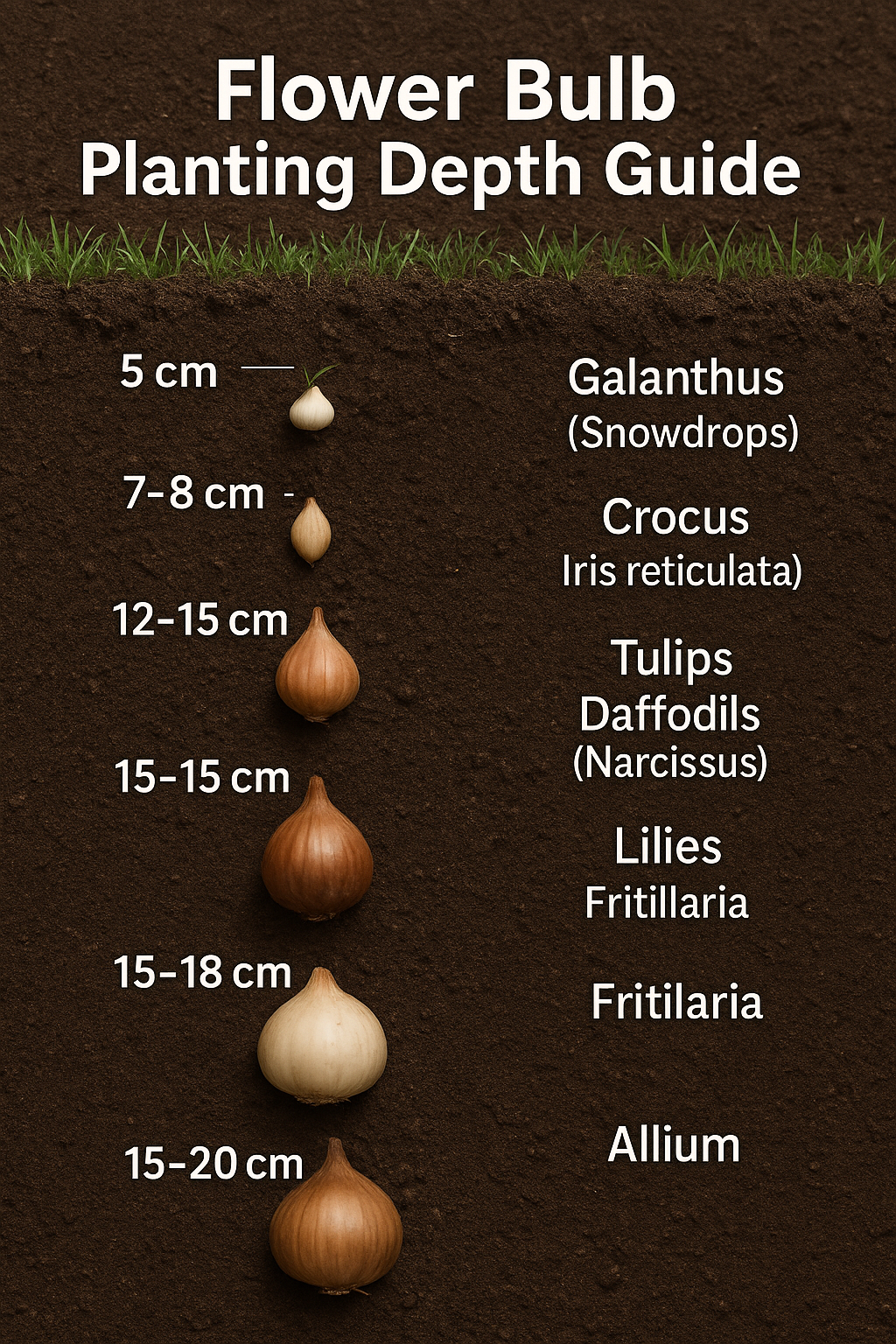Flower Bulb Planting Depth Guide: How Deep to Plant for Vibrant Blooms
If you’ve ever wondered why some flower bulbs burst into color while others struggle, the answer might be hiding just below the surface — literally. Planting depth plays a critical role in the success of your bulbs. Too shallow, and they risk exposure and poor root anchoring. Too deep, and they may not bloom at all.
In this guide, you’ll learn the ideal planting depth for popular flower bulbs like tulips, daffodils, crocuses, and more. With a little planning and the right measurements, you’ll set the stage for a stunning spring or summer garden.
—
Why Planting Depth Matters for Bulbs
Bulbs are nature’s time capsules — storing energy until the moment is right to bloom. But for that to happen, they need to be placed at the correct depth in the soil. This ensures:
🔒 Protection from frost and pests
🌱 Stable root development
🌼 Proper emergence timing and healthy blooms
Ignoring depth recommendations can lead to weak growth, delayed flowering, or no flowering at all. So let’s dig in.
—
General Rule of Thumb
A reliable rule is to plant bulbs at a depth two to three times their height. But for best results, follow specific recommendations for each flower type.
—
Recommended Planting Depths for Common Flower Bulbs
Here’s a quick-reference list of how deep to plant flower bulbs in your garden. All measurements are in centimeters (cm) and refer to depth from soil surface to bulb base.
🌸 Small Bulbs (5–10 cm deep)
Bulb Type Planting Depth
Galanthus (Snowdrops) 5 cm
Crocus 7–8 cm
Iris reticulata 8–10 cm
These smaller bulbs don’t need to go deep. Plant them in clusters for a naturalized effect.
—
🌷 Medium Bulbs (10–15 cm deep)
Bulb Type Planting Depth
Tulips 12–15 cm
Daffodils (Narcissus) 12–15 cm
Daffodils and tulips benefit from a bit more depth to protect against frost heave and animal digging.
—
🌼 Large Bulbs (15–20 cm deep)
Bulb Type Planting Depth
Lilies 15–18 cm
Fritillaria 20 cm
Allium 15–20 cm
Large bulbs like Alliums and Fritillarias need deeper planting to anchor their tall flower stalks and promote strong root systems.
—
How to Measure Planting Depth Accurately
Use a garden trowel with depth markings or a simple ruler. Remember, measure from the soil surface to the base of the bulb, not the top.
Planting Tips:
Plant with the pointed end facing up.
Loosen soil to twice the planting depth for easy root spread.
Add compost or bulb food to enrich the planting hole.
—
Bonus Tip: Adjust for Soil Type
Sandy soil? Go slightly deeper for better anchorage.
Clay soil? Stay on the shallower side and add organic matter for drainage.
—
Final Thoughts
Getting your flower bulb planting depth right is one of the easiest ways to ensure your garden explodes with color come blooming season. Whether you’re planting spring classics like tulips and daffodils or summer standouts like lilies and alliums, following these simple depth guidelines gives your bulbs the start they need.
Grab your gloves, measure with care, and watch your garden come alive!
—
🔍 Keywords:
planting depth for flower bulbs
how deep to plant tulips and daffodils
flower bulb planting guide
ideal depth for crocus, iris, lilies
spring bulb planting tips

